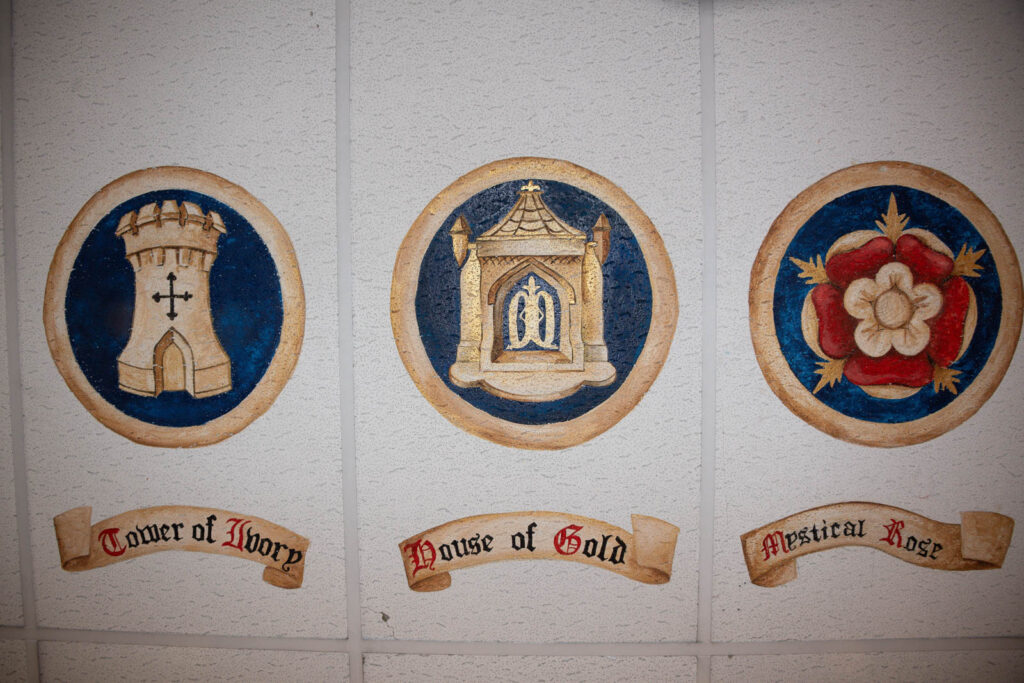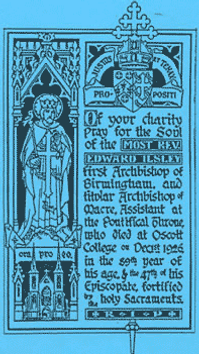Home » Our School » History

In the early part of the twentieth century, Archbishop Edward Ilsley built the first church in the village of Acocks Green. The foundation stone was taken from the battlefields of Ypres in Belgium. Two years later a school was built for children aged five to fourteen years. In 1955 building began on what is now our school and it opened in 1957. As Acocks Green expanded so did the school. Drawing largely but not exclusively from immigrant Catholic families who came to find work in the post-war reconstruction of Birmingham, the school became and remains an important focal point of the community. It’s a long way from the West Coast of Ireland, but that is where many of our students have their roots.

Archbishop Ilsley was born in May 1838. He was archbishop of Birmingham from 1911 to 1921 when he retired. He died in 1926.
In October 1873, St. Bernard’s Diocesan Seminary was opened at Olton, Warwickshire, of which the first rector was the Rev. Edward Ilsley, successively canon and bishop-auxiliary (December 4, 1879).
On 17 February 1888, Dr. Ilsley became the second Bishop of Birmingham and at once took in hand the difficult task of protecting and rescuing the destitute Catholic children of the diocese. St. Edward’s Home for homeless boys was opened at Coleshill, Warwickshire, on November 6 1906, with branch houses for boys and girls, similarly situated, in various centres, besides a Home for Working Boys and a Night Refuge, both in Birmingham.
In July 1889, Oscott College was closed to lay students and reopened as a Central Seminary for ecclesiastics only. In accord with the movement promoted by the early provincial synods of Westminster, Bishop Ullathorne established in 1872 the Birmingham diocesan seminary at Olton, a few miles south of Birmingham. He placed the Rev. Edward Ilsley (now bishop of the diocese) over it as rector, while he himself personally directed its spirit. The institution flourished, though the number of students averaged twenty. Meanwhile, Oscott maintained its own school of philosophers and theologians. Oscott, like Olton, suffered from financial strain. With a bold stroke, Bishop Ilsley closed Oscott as a mixed college, sold the seminary buildings and estate, and gathered all his seminarists and teaching staff into the one greater seminary of St. Mary’s, Oscott. The new institution began with thirty-six students in September 1889, under the rectorship of the bishop.
The history of Roman Catholicism in Birmingham since Ullathorne’s death is mainly one of expansion. One notable and controversial change of policy was made by Edward Ilsley almost immediately after he succeeded Ullathorne. Ilsley closed both the public school at Oscott and the diocesan seminary which his predecessor had established at Olton in 1867, and restricted Oscott to theological students from the diocese. He was deeply interested in Oscott and remained rector for several years after he became bishop. In 1911, Birmingham became an archbishop, with subordinate sees at Clifton, Newport, Plymouth, and Shrewsbury. Ilsley was the first archbishop.
From: ‘Religious History: Roman Catholicism’, A History of the County of Warwick: Volume 7: The City of Birmingham (1964), pp. 397-402. Date accessed: 14 June 2006 ,
Proudly part of the St. Teresa of Calcutta Multi Academy Company.
Registered Company No. 11844357. Registered Address:
St Joseph’s House | 1157 Warwick Road | Acocks Green | Birmingham | B27 6RG
Tel: 0121 706 4200 | info@stocmac.org.uk
© 2024 All Rights Reserved.